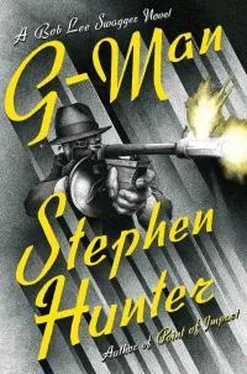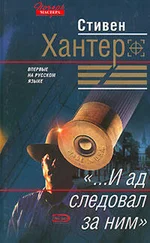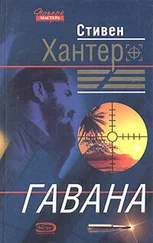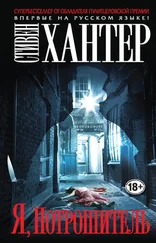Стивен Хантер - G-Man
Здесь есть возможность читать онлайн «Стивен Хантер - G-Man» весь текст электронной книги совершенно бесплатно (целиком полную версию без сокращений). В некоторых случаях можно слушать аудио, скачать через торрент в формате fb2 и присутствует краткое содержание. Жанр: Старинная литература, на английском языке. Описание произведения, (предисловие) а так же отзывы посетителей доступны на портале библиотеки ЛибКат.
- Название:G-Man
- Автор:
- Жанр:
- Год:неизвестен
- ISBN:нет данных
- Рейтинг книги:3 / 5. Голосов: 1
-
Избранное:Добавить в избранное
- Отзывы:
-
Ваша оценка:
- 60
- 1
- 2
- 3
- 4
- 5
G-Man: краткое содержание, описание и аннотация
Предлагаем к чтению аннотацию, описание, краткое содержание или предисловие (зависит от того, что написал сам автор книги «G-Man»). Если вы не нашли необходимую информацию о книге — напишите в комментариях, мы постараемся отыскать её.
G-Man — читать онлайн бесплатно полную книгу (весь текст) целиком
Ниже представлен текст книги, разбитый по страницам. Система сохранения места последней прочитанной страницы, позволяет с удобством читать онлайн бесплатно книгу «G-Man», без необходимости каждый раз заново искать на чём Вы остановились. Поставьте закладку, и сможете в любой момент перейти на страницу, на которой закончили чтение.
Интервал:
Закладка:
“A bit heavy for a lawyer like me, I have to say. Is there anything else?”
“Sir, I’m wondering if we could do this on the sly. No publicity, no newspapers, some way I don’t have to resign this here job. I’m sure the judge will let me go, perhaps even encourage me, as he’s a big Democrat and a true Roosevelt man, but here are my roots and I’d like to have something to come back to.”
“It’s an excellent idea,” said Inspector Cowley. “I wish more of our men felt that commitment to the team.”
“Then I think you’ve got yourself a man.”
“I am gratified and will notify the Director immediately.”
“If I get Johnny Dillinger in my sights, I will bag him for you or die trying.”
“I know you will. But the newspapers have perhaps made too much of Dillinger. He’s got a gift for publicity over and above his talents for larceny, and it seems he’s not a key larcenist as we’ve been led to believe. In any event, it’s not Public Enemy Number One I fear. It’s a man called Lester. Now, that’s a scary proposition. Only a Charles Swagger has the nerve to face Lester J. Gillis.”
“Lester?” said Charles. “Never heard of him.”
CHAPTER 4
LITTLE ROCK, ARKANSAS
The present
Bob, in a suit that his formality demanded, sat in the law offices of Smathers, Vincent and Nichols in a skyscraper in Little Rock and looked at the odd collection that Jake Vincent’s assistant had gently removed from a much-battered and dirtied old box.
The pistol was at least knowable. It was a well-preserved Colt Government Model, greasy from the oil-soaked cloth that had been its shroud for eighty or so years underground. The firm thoughtfully provided Bob with rubber gloves, so he could pick it up.
His fingers knew it immediately. As a design, the thing was one of many masterpieces that had tumbled from the brain of John M. Browning before World War I, so perfect in conception and execution, such a chord of power and grace and genius of operation that even now, more than a century after its year of adaptation in 1911, it was the standard sidearm of many of the world’s elite units. Nothing plastic, nothing sleek and streamlined, with a huge magazine of smaller cartridges, could really replace it for the trained man.
This one bore no rust, testament to the care with which it had been packed and the airtightness of the tin box, which, upon reflection, could not have been tin, as all had assumed, but welded steel. Again, that expressed care and savvy.
Bob eased back the slide, finding it smooth, until it locked, exposing through the ejection port the pistol’s cockpit. He looked in, and though slick with oil, the pistol showed its perfection in the harmony between barrel and magazine follower and the firing-pin hole in the bolt face, with two other nubbins projecting slightly, the extractor and the ejector. Amazing that an eighty-year-old spring held so tight and true, locking the whole gun in powerful tension. He held it close to his eye to behold the workmanship of the old Colt Hartford plant in those days, the precision of the Colt lettering — COLTS PTS FA MFG CO/HARTFORD CT U.S.A. — along with the patent line, and, on the other side, COLT AUTOMATIC/CALIBRE .45, complete down to old-school spelling. The serial number was 157345C, meaning it left Hartford in 1928, and the Colt Company had cooperated swiftly, locating the bill of lading, which had sent a batch of fifteen pistols to the U.S. Postal Department. Evidently the Postals didn’t like the heaviness and big, smacking kick of the big-bore, and the guns must have been shipped to the FBI in ’34, where the high impact of the fat bullet was more meaningful to the operators than the size and weight of the piece. To an experienced man killer like Charles, the .45 would have been far preferable to the mousy .38 Special that most of the other agents carried, though some of them might have upgunned to a higher-powered .38 on a .44 frame. The .357 Magnum, which became synonymous with the Bureau, didn’t arrive until ’35.
He drew it closer to his eye. The fit of metal to metal was flawless, all the pieces locked in and held by precision machining, not pins or screws. In fact, the whole mechanism was united in solidity by a single pin that ran from the slide release through the body of the gun, and only by popping it out — it took a touch — could the gun be disassembled. The checkering on the hammer spur was a constellation of perfectly aligned pinpricks, the parallelism of the slide serrations was masterful. They knew how to build them in those days, when it was the machinist’s skill and intuition that made it happen, not some computer algorithm. He popped the slide release and let that heavy part ease forward in capture, encompassing the barrel again, let the gun settle into his hand, and peered through the tiny sights that took someone with talent to get the most of.
No holster, as whoever squirreled it away knew that the leather, being organic, would disintegrate, moisture or not. He put it down and moved next to another relic of the firearms world of 1934. Unwrapped from a coil of oiled cloth, it revealed itself to be some kind of cylinder, obviously created at the lathe by a skilled machinist. It was a fine piece of work, a heavy chunk of sculpture cut from a single block of high-strength steel. It looked a little like a Japanese grenade or something, but it was hollow, and perforated at each end lengthwise by a hole that appeared to be roughly three-tenths of an inch wide. At one end, the width compressed into a cone that encircled what had to be the muzzle; at the other, the interior of the opening had been machined expertly with precise screw grooves, so it could be twirled on and tightened against the barrel of whatever weapon it assisted. It was cut by twelve grooves, each exactly parallel to the others, all angles squared perfectly to ninety degrees.
“Ever see such a thing?”
“Not exactly. Looks like some sort of automatic weapon accessory, a muzzle brake or something. The slots let hot gases escape upward, and their jet action keeps the muzzle down. Most automatic weapons have ’em. But this is so big and strange. Maybe from a Japanese or a French gun, a Belgian or Czech, something he brought back from the war, I’m thinking.”
“What would it be doing here?”
“Hell if I know,” said Bob.
Putting the cylinder down, he next considered the bill. It bore the picture of the stentorian Grover Cleveland, and its green was a lighter green. All the zeros after the 1 looked kind of goofy, particularly up at the corners, where they had to be curled around to fit. Some associate had wisely sealed it in a baggie so nothing of this century could tarnish it. Passed from teller to robber at gunpoint. What else could it be? Then, tossed somewhere, maybe as getaway money, in case someone had to move fast and didn’t have time to pack. Or maybe it was swag that old Charles had picked up, a bill from a big gambler in Hot Springs he’d shaken down or found dead or money otherwise unaccounted for in the aftermath of a robbery that he presumed nobody would notice if missing. He put it away for the rainy day sure to come, knowing nobody would ever look for it. But its denomination had to make it something of a singularity that would make it easy to identify, easy to trace, less valuable than its face value, since it would have to be stepped on several times by brokers before a third of it returned as usable, untraceable cash. Unlikely that Charles would not know that. Unlikely also that he’d have the connections to get the job done and the time to wait for it to happen. And, finally, unlikely that it would be worth the effort, in 1934 terms, for a payoff coming in at two-thirds less than a grand.
Читать дальшеИнтервал:
Закладка:
Похожие книги на «G-Man»
Представляем Вашему вниманию похожие книги на «G-Man» списком для выбора. Мы отобрали схожую по названию и смыслу литературу в надежде предоставить читателям больше вариантов отыскать новые, интересные, ещё непрочитанные произведения.
Обсуждение, отзывы о книге «G-Man» и просто собственные мнения читателей. Оставьте ваши комментарии, напишите, что Вы думаете о произведении, его смысле или главных героях. Укажите что конкретно понравилось, а что нет, и почему Вы так считаете.












